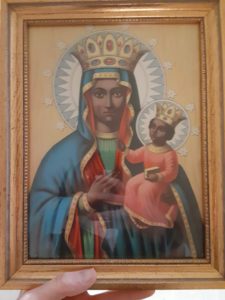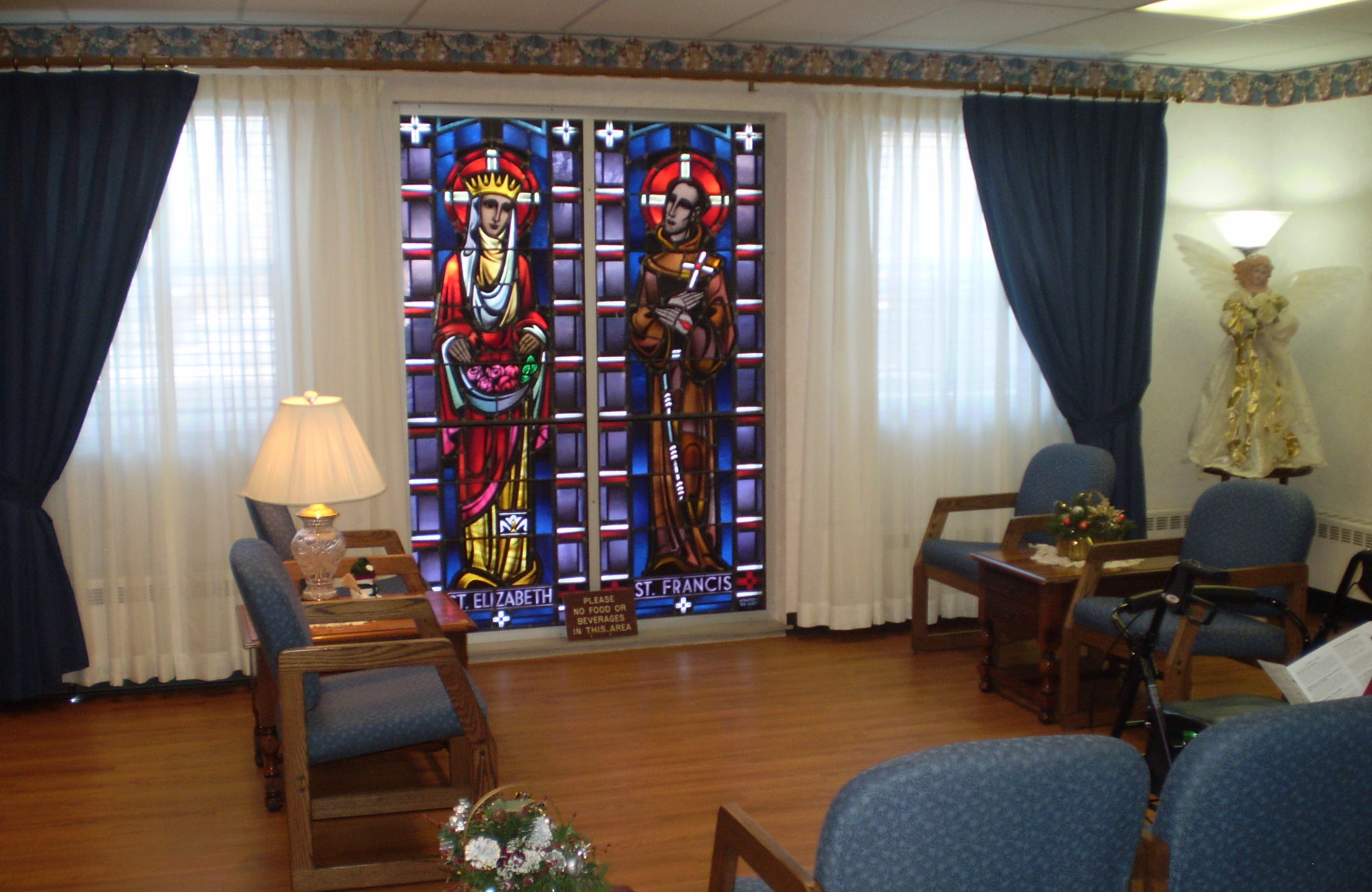 Recently, a long-time friend of the Sisters at St. Anne’s donated a couple of items here which had belonged to his deceased mother. One was readily recognized as a carving to the Last Supper. The identity of the other piece took a bit more investigation.
Recently, a long-time friend of the Sisters at St. Anne’s donated a couple of items here which had belonged to his deceased mother. One was readily recognized as a carving to the Last Supper. The identity of the other piece took a bit more investigation.
Although not well-versed in Polish art, Sr. Christina mused, “I wonder if that isn’t Our Lady of Czestochowa, the Black Madonna.” Her dark completion and the painting’s antique, iconic style were definite clues.
With a bit of research, this initial conclusion was confirmed. The tell-tale scratch marks on Mary’s right cheek solidified the speculation. Actually, as the story goes, thieves were attempting to vandalize the painting. Among other things, they stabbed at the face of Our Lady. We are told that, despite multiple attempts to undue the damage wrought by these villains, the marks have remained.
This is not the only interesting tidbit connected with this image of the “Queen of Poland.” Legend has it that St. Luke actually painted the image on a table made by St. Joseph, which would date the piece back to the first century. St. Helena, who identified the True Cross on a voyage to the Holy Land, is said to have brought the icon back with her. Historians, however, are more likely to trace the painting to the sixth or ninth centuries. Whenever its origin, it may well be that the painting was passed from family to family in royal dowries until it made it to Poland!
Another legend around the painting states that Prince Ladislaus was taking the prized depiction of Mary somewhere, when, suddenly, his horses stopped, refusing to go any further. He took this as a sign that image was to remain at that exact location, Częstochowa.
There are some variations in these legends, and some accounts tend to blend together. We do know that the image probably came to the place whose name it took on sometime in the 1300s.
One may wonder why the image of Our Lady is so dark. Smoke and soot damage probably account for this distinct characteristic of the painting. Interestingly, some make the connection of the black color with a passage in the Song of Songs, where the beloved is described as “black and beautiful.”
In the 1430s, it was painted over because of severe damage it had undergone at the hands of vandals. The restorations which have occurred over the centuries have remained true to the original content, but the style changed with the time.
One of our residents, originally from the Warsaw (North Dakota) area, was familiar with her, and even recalled the damage to the face on the painting.
Sources:
- https://en.wikipedia.org/wiki/Black_Madonna_of_Cz%C4%99stochowa
- http://saintsresource.com/our-lady-czestochowa
- http://www.polishamericancenter.org/Czestochowa.htm
- https://udayton.edu/imri/mary/c/czestochowa-black-madonna.php
- http://www.catholictradition.org/Mary/czesto.htm
- https://www.english.op.org/godzdogz/our-lady-of-czestochowa-queen-of-poland

